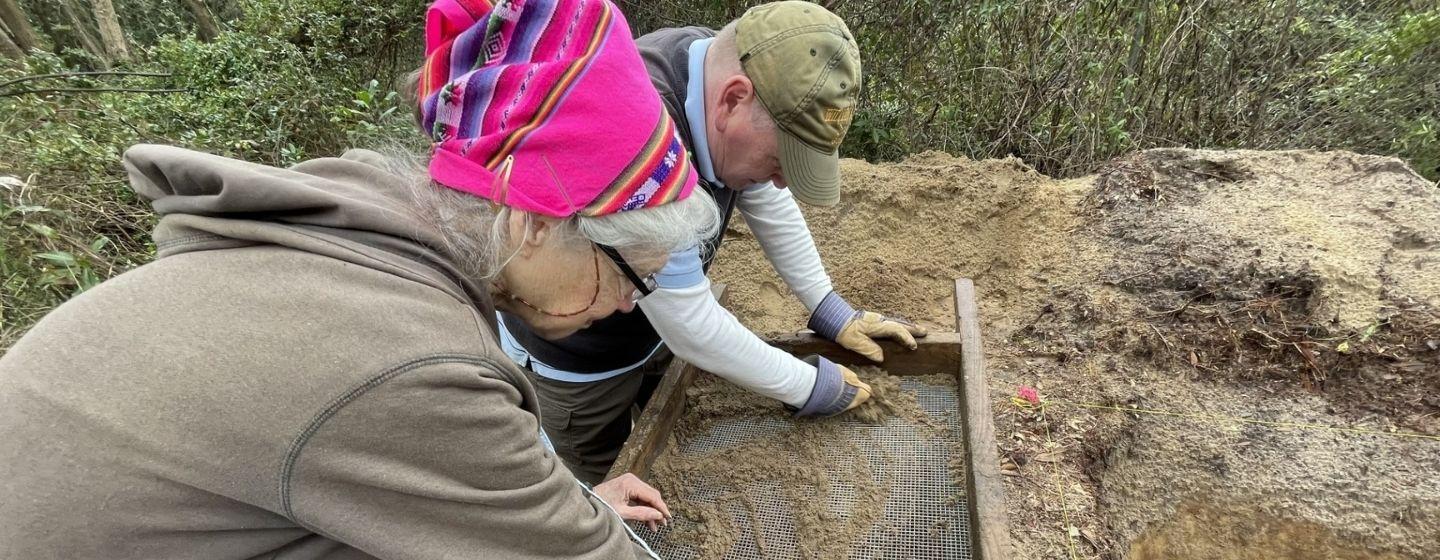Copper Earring Found Near ‘Lost Colony’ Site Came from First English Explorers


A copper earring discovered by archaeologists during a dig at Roanoke Island’s Elizabethan Gardens was most likely used as an item for trade or given as a gift to local Native Americans by Sir Walter Raleigh’s explorers.
That’s based on an analysis of the jewelry piece conducted by researchers at the Madison Accelerator Laboratory at James Madison University in Harrisonburg, Virginia.
The study found the copper used to make the ring was European in origin rather than North American. The earring is made of drawn copper and features rounded strands, which Indigenous peoples did not have the technology to produce. In addition, neither the French nor the Spanish, England’s chief rivals in exploring the Americas, traded as far north as Roanoke Island.
“We’re really excited about this discovery and the analysis of the earring because it has an intriguing story to tell,” said Eric Klingelhofer in an email from the First Colony Foundation. Klingelhofer, the foundation’s vice president for research, led the Elizabethan Gardens dig. “This piece of copper now confirms that we have indeed located the site of Roanoac, the Algonquin village that welcomed the first English explorers in 1584.”
The foundation said the earring was likely traded or gifted to local Native Americans between 1584 and 1585. The wife of the village chief treated English explorers Philip Amadas and Arthur Barlowe to a lavish woodland feast.
“We were entertained with all love and kindness, and with as much bounty, after their manner, as they could possibly devise,” Barlowe wrote in his journal.
“Which makes you wonder, was their hospitality later repaid with a gift of this copper earring, jewelry to adorn a chieftain’s wife or her ladies?” speculated Klingelhofer. “There’s no way to be sure, of course, but it’s an intriguing possibility, isn’t it?”
The copper ring would have made for a valuable trade item. Historians say copper had spiritual significance for Indigenous tribes.
Evidence from earlier digs appears to confirm a theory that the village of Roanoac was a palisaded village with about nine houses, surrounded by high walls. The elite warrior class lived inside the walls, and the working class lived outside the walls on farmsteads, raising crops for themselves and the ruling class.
Roanoac village was abandoned in 1586, so the earring likely arrived in the village as a gift or exchanged in trade before then. The foundation believes it would have been either during a 1584 visit by Amadas and Barlowe or during a 1585 military outpost under explorer Ralph Lane.
Sir Walter Raleigh’s final effort to establish an English colony was a civilian venture in 1587 led by John White but that would have been too late. The Lane settlement would later be abandoned and became known as the Lost Colony. Its fate remains one of the great mysteries in American history.
Watch archaeologists from the First Colony Foundation at work in the Sci NC story from 2017 below.